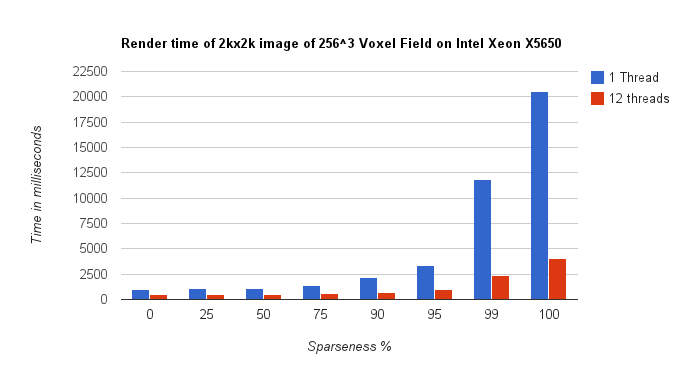
Voxel Renderer: Parallellism is key
I’ve implemented a stable version of the Amanatides and Woo algorithm for fast traversal of voxel grids and added some optimisations and support for non-square voxels. After reading up on OpenMP, I couldn’t stand having a renderer which ran an inherently parallel algorithm on just one CPU. Every ray shot …




